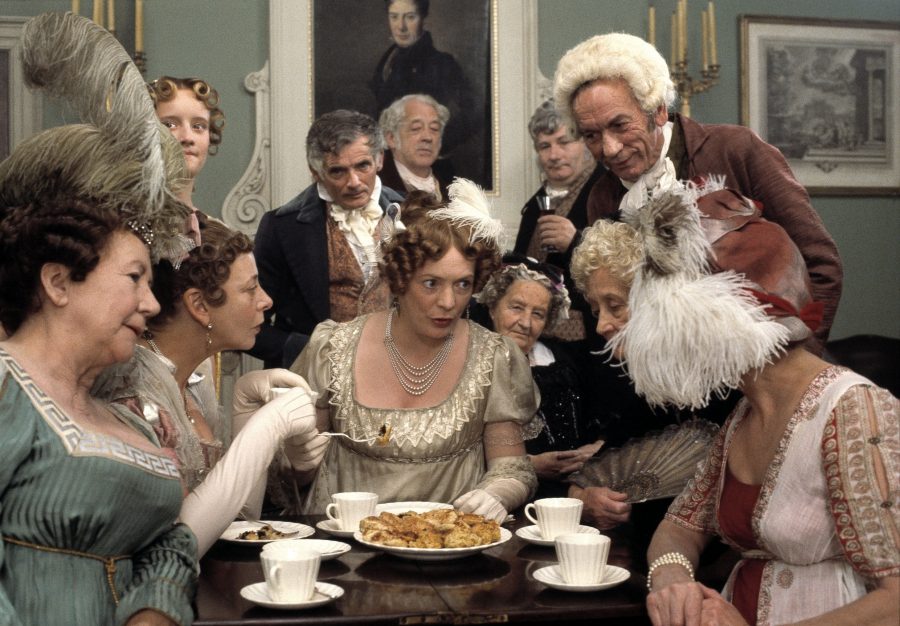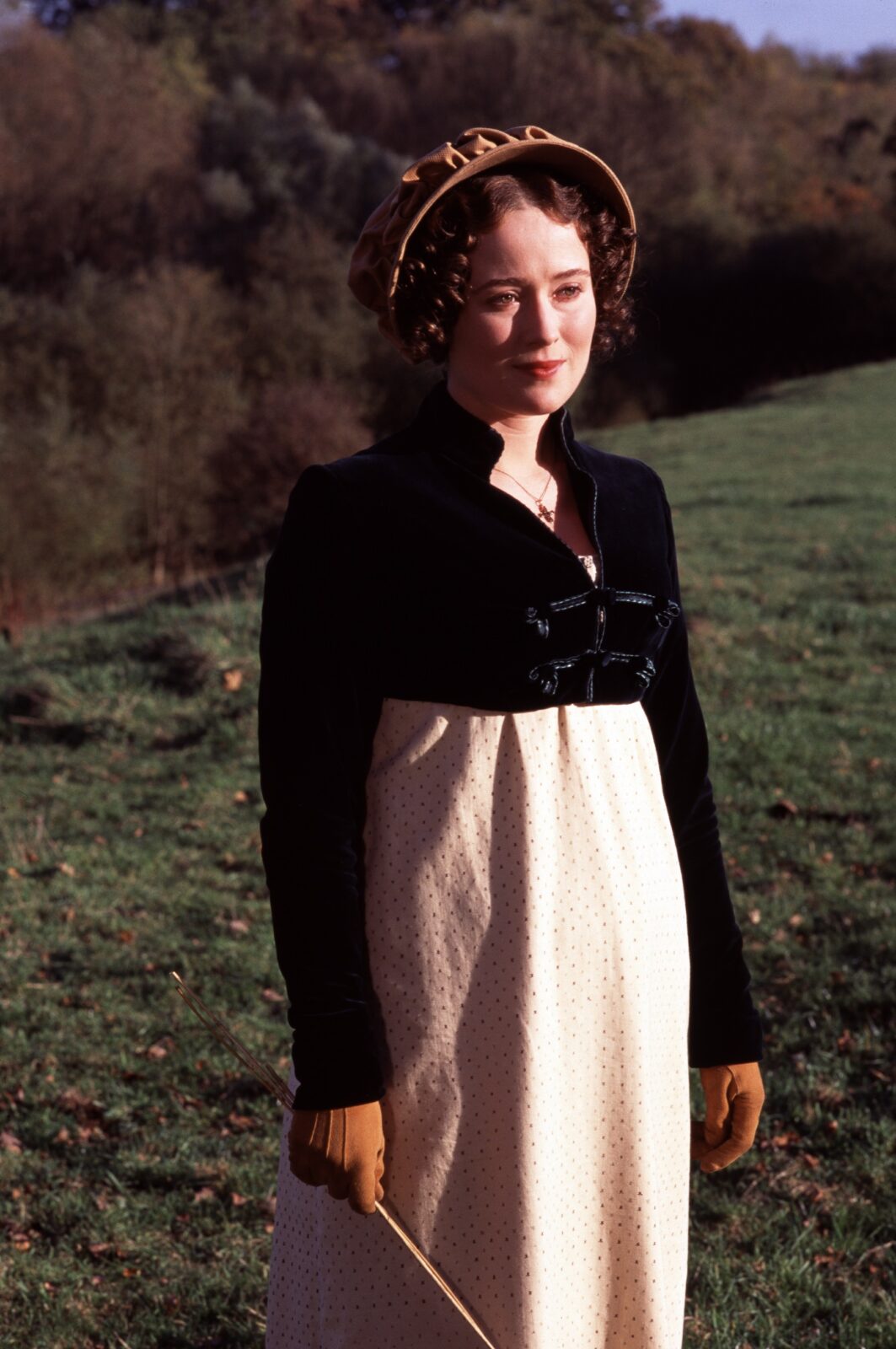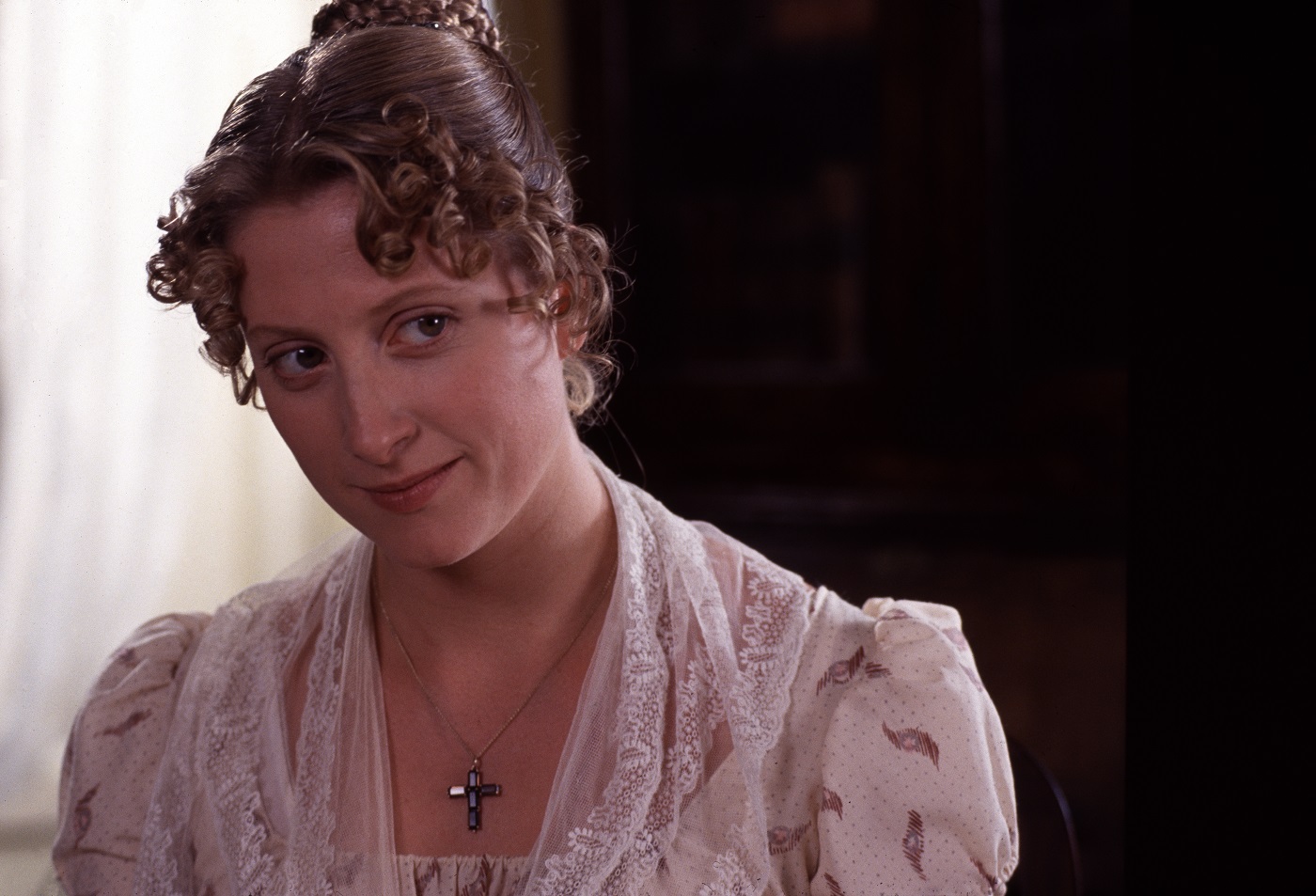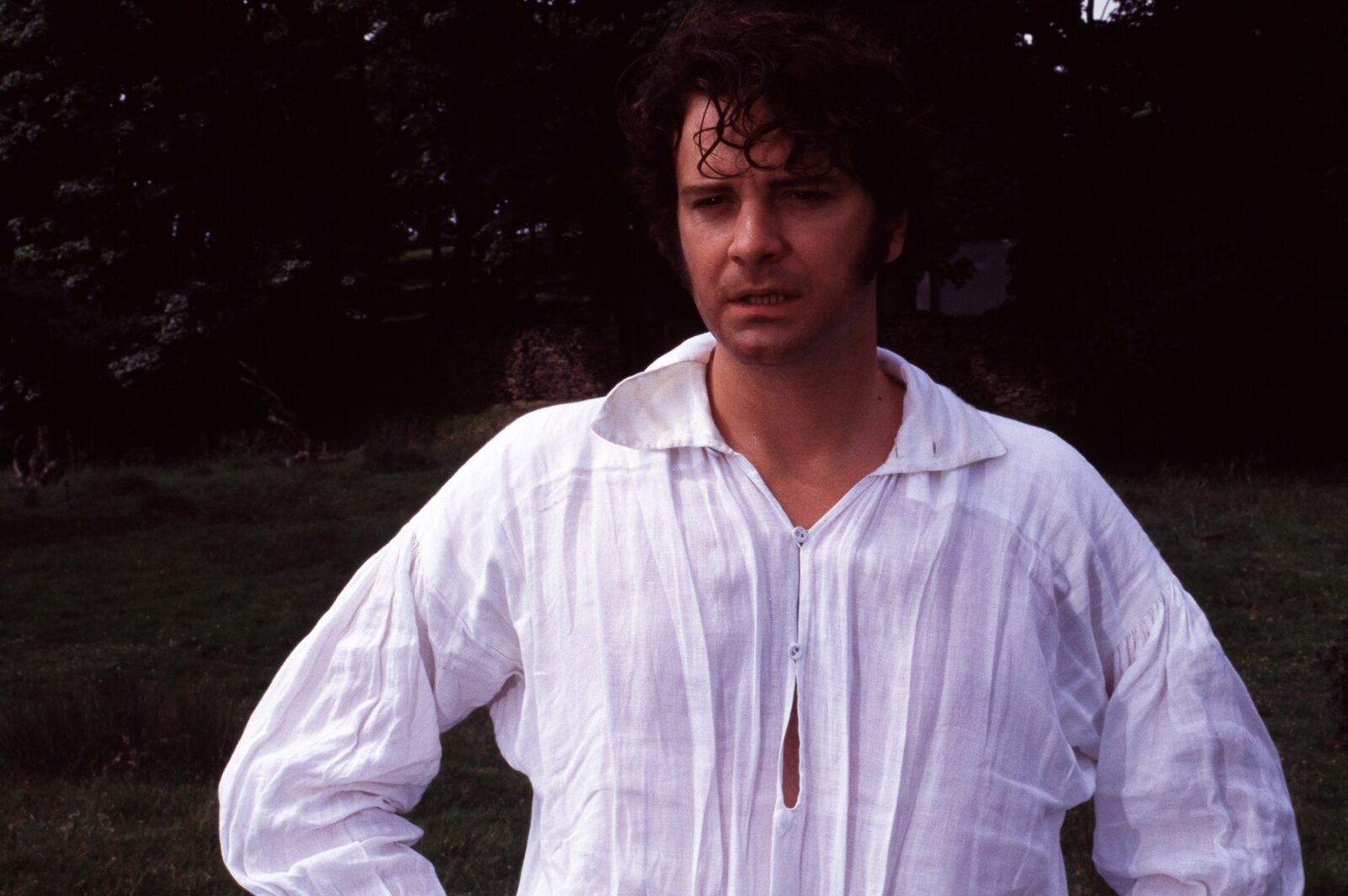Costume in the 1995 BBC Pride and Prejudice
In tribute to our exhibition The Making of Pride and Prejudice, dress historian Hilary Davidson reflects on the success of the costumes in Andrew Davies' ever-popular BBC adaptationThere is before, and there is after the BBC’s 1995 version of Pride and Prejudice. The TV series set a benchmark for adaptations of Jane Austen’s work that has never been surpassed in terms of cultural influence and audience adoration. The show brought Austen’s masterwork to life in a physical, energetic way that still resonates with viewers, and the costumes were a huge part of the effect.
Designer Dinah Collin did a masterful job that stands up to scrutiny nearly 30 years on. She was working at a time when the study of historic dress was becoming more focused, attracting more scholars, and opening more resources for designers to draw from. Collin dove into Regency fashion research in order to make costumes that were more like clothes for the actors and enhance Andrew Davies’ vision of activity and movement. She was also concerned with interpreting what she found in archive and museum collections through the lens of costuming, the small details that find a balance between historical evocation and a production’s world-building design.
Jennifer Ehle as Lizzy Bennet strides confidently along the fields as her petticoat collects its famous six inches of mud and we believe her ease of movement. Each of the five sisters’ wardrobe of outfits reflects her character yet presents a cohesive sense of their middling gentry social sphere. Lydia’s necklines are dangerously low while Mary’s reach her chin, and even when the sisters’ decolletages are covered up by habit shirts or chemise, Lydia’s is transparent. Kitty’s clothes are not quite as nice as Lydia’s. Lizzy’s wardrobe is grounded in earthy warm tones, reflecting her nature, as does Jane’s quietly elegant ensembles. A lovely touch is that Jane and Lizzy wear copies of the topaz crosses Jane and Cassandra owned.
Mrs. Bennet’s gowns and accessories, especially her many age-appropriate caps are frilly, fussy and not very flattering, which is a nice suggestion of her character. Her sister Mrs. Phillips, who lives in Meryton and is a source of gossip when the girls go into the village shopping, also has a wardrobe of more exaggerated clothes – bonnet brims a little high, bows a little large, clothing a little too much. It’s the small details like these that give a sense of how Regency women expressed their taste and character in fashion choices, and it matches the way Austen slyly emphasises the same things through dress allusions in her novels.
One shift away from historic Regency fashion is the costuming choice to dress the wealthier and more fashionable characters in deeper colours and richer fabrics to highlight their backgrounds and make the contrast with the Bennets and their milieu clear to audiences. The Bingley sisters are resplendent in silks, feathers, pearls, jewellery, and tastefully arrayed trimmings. The luxury of their dress shines against the country ladies’ cottons, muslins and small prints. At the time, a sheer white muslin imported from India could be equal in cost to an expensive silk. Its very whiteness demonstrated the leisure and money to pay someone else to look after one’s clothes. However, while Regency fashion pundits understood this nuance, it’s harder to convey on screen, so making the Bingley ladies’ clothes ostentatious plays the same role.
Lady Catherine De Burgh receives similar costume treatment. Her clothes are stately and less immediately fashionable, but are made of even more expensive fabrics. She whirls through the Bennet garden in very costly handmade lace, silk velvet, a mink fur tippet and a bonnet that backs up her imposing presence. The visual shorthand makes it clear Darcy’s aunt is out of her place, while Lizzy, even in her nightgown, stands her ground with grace. Poor Anne de Burgh is also wrapped up in silks but they do nothing for her appearance. Her clothing tells the viewer money cannot buy charm.
But the most iconic costume from this show is a male one: the immediately immortal Shirt. Colin Firth as Mr. Darcy stripping off to dive into a pond (or rather, his stunt double), then striding refreshed over the fields in a shirt actually made damp from an assistant misting it with water has become one of the most recognisable moments of twentieth-century television. This spontaneous moment was never written to be distinctive but the cultural legacy of The Shirt continues today as a shorthand for costume drama sensuality. The eroticism it conjures has all the restrained passion of Darcy and Lizzy’s looks over the piano.
The Shirt’s power is also testament to the quality of the costuming. Before this scene, Darcy has been fully and correctly covered in the new styles of male clothing emerging at this time. Based on the riding clothes of country gentlemen, the cutaway tailcoat, close fitting trousers and clean white linen garments are as beautifully brought to life on screen as the women’s styles. To see Darcy undone; dishevelled, has more of a frisson precisely because he is so thoroughly clothed beforehand.
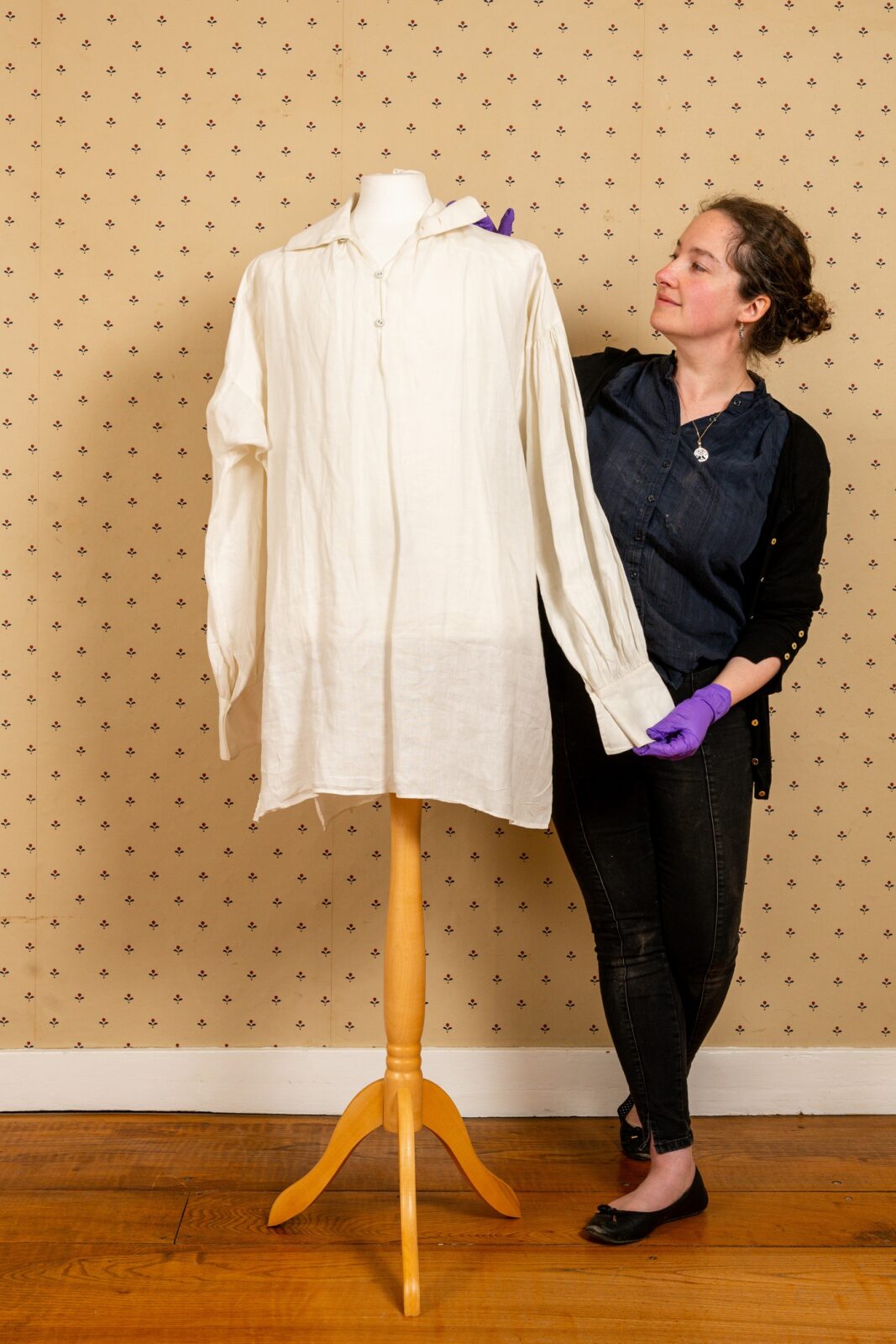
Director Lizzie Dunford tweaks the Mr Darcy shirt, on display at Jane Austen’s House in 2022 as part of our Jane Austen Undressed exhibition
The hair also deserves a special mention. Although this production was made to be a fresher take on the classic, the hairstyling had not yet fallen into the twenty-first century screen trend of having heroines’ hair tumbling over their shoulders while the top half is put up. This now popular look is wholly ahistorical and effectively stops the costuming at the neck. The intimacy of a having woman’s hair out is shown in scenes set in Lizzy and Jane’s bedroom, two sisters out of public view. Having half their hair out would have been the Regency equivalent of Darcy in his shirt. When Jennifer Ehle won Best Actress at the BAFTAS in 1996, in her speech she quite rightly declared ‘Half of this award should go to my wigs’. Even Colin Firth’s hair was dyed darker and permed to give him the perfect classically-inspired tousle.
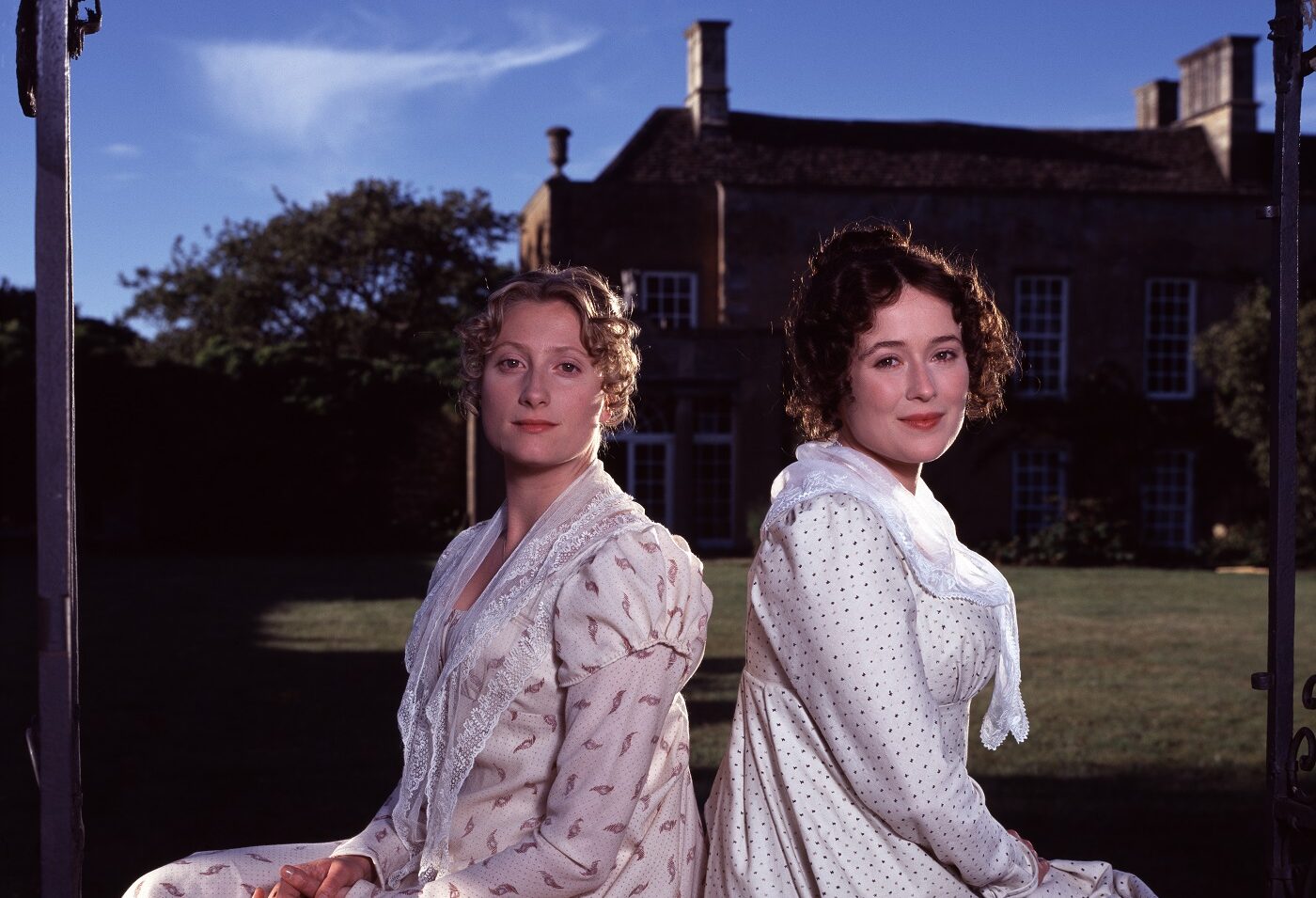
Lizzy and Jane Bennet (played by Jennifer Ehle and Susannah Harker), sporting their Regency up-dos. Image ©BBC
The Pride and Prejudice costuming treads a perfectly balanced line between history and screen; between accuracy and approachability; between custom and comfort. The sense of life they breathed into the whole production helped create a new interest in Regency fashions and has forged thousands of peoples’ vision of this period of history. And it’s still deeply enjoyable to watch. May The Shirt never dry out.

Hilary Davidson is dress and textile historian, curator and archaeologist based in New York. Her new book Jane Austen’s Wardrobe will be published in September 2023.
Our exhibition, The Making of Pride and Prejudice, is open now and free with House entry – find out more!
